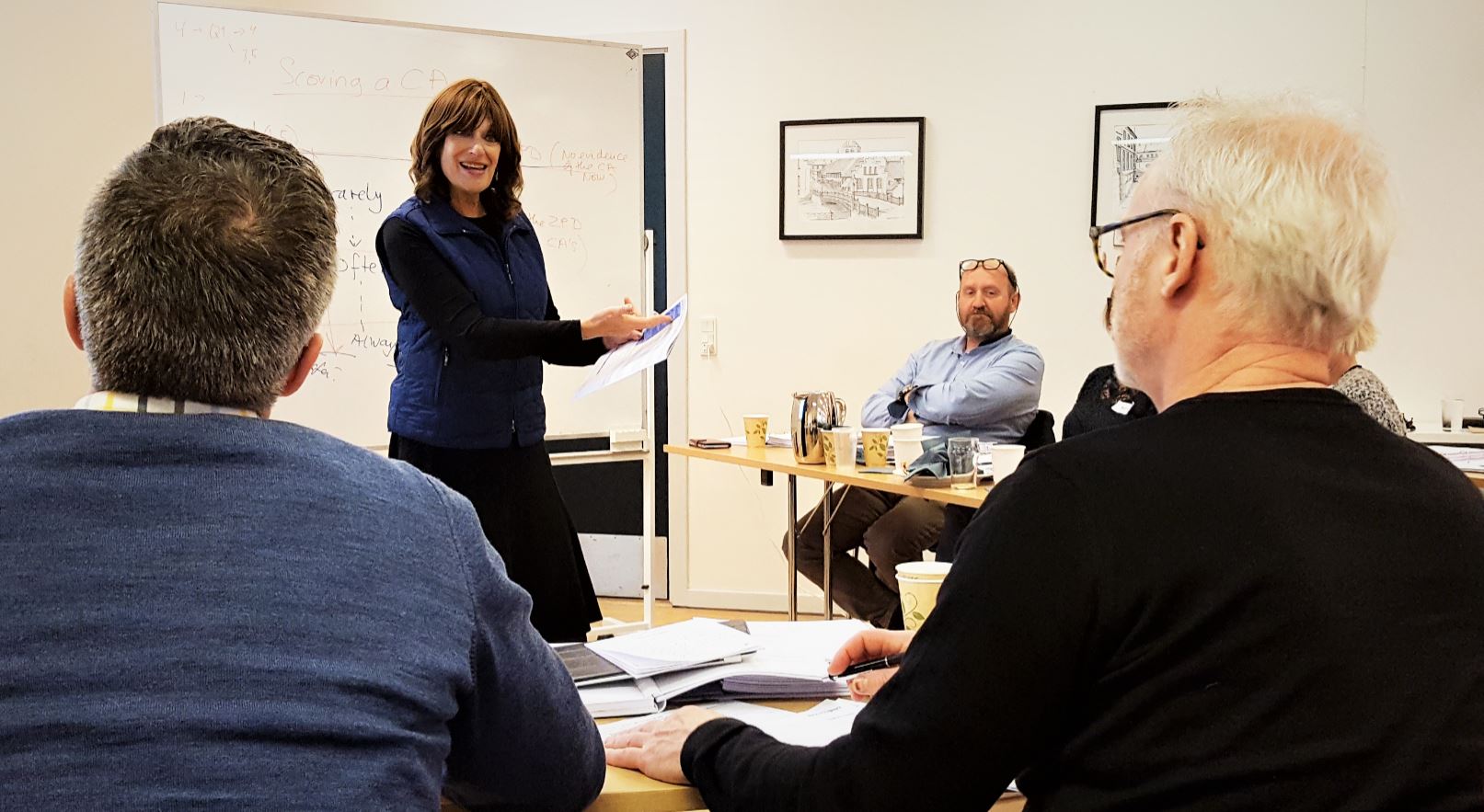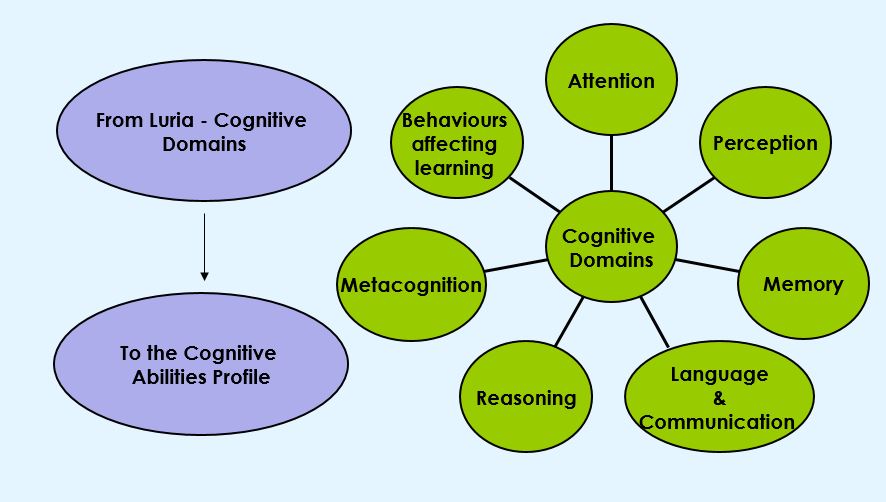This section tells you about the CAP. What it is and what is it not? Why was it developed? What makes it novel? What research has been done on the CAP? How can it be used and for whom?
The CAP draws upon developmental psychology concepts, such as Vygotsky’s Zone of Proximal Development and Luria’s model of mental processes, as well as the work of Feuerstein and Lidz in the field of Dynamic Assessment. The theories have been operationalised in the CAP which has enabled the benefits of dynamic assessments models to be embedded within a consultation/ observation framework for use by psychologists, teachers and therapists etc., to analyse the components of curriculum tasks and a learner’s approach to tasks and other activities, without necessarily requiring lengthy individual assessment.

What is the CAP – why was it developed?
If you have just read the previous section about Dynamic Assessment, or perhaps from your own experience, you will be aware that would- be and active DA users face a number of challenges.
In 1998/9 I conducted a survey across EP services in the UK to ask about knowledge and use of DA. By that date, I had taught DA courses in quite a few settings and anecdotally had the impression that despite recognition of its potential benefits there were a number of barriers, making it difficult to effectively use DA in practice. This was confirmed in the survey (Deutsch and Reynolds, 2000) and I can summarise my findings in one short phrase – high interest, low usage. This got me thinking about how to enable useful DA concepts to be more accessible to psychologists, teachers and others and enter mainstream classroom practice without necessarily having to go the DA route.
In EP practice, consultation was becoming increasingly popular, so I decided to use this trend in psychology practice to develop the CAP. CAP is a consultation framework to be used with teachers, parents, therapists and the learner him/herself, to identify patterns of cognitive strengths and difficulties and then jointly plan, intervene and systematically monitor progress. The stages of development and early trials that the CAP went through before publication at the end of 2009, are documented in Deutsch and Mohammed (2008) and in one of the chapters of the CAP manual.
What is novel about the CAP?
CAP has a number of novel features:
The CAP may be the first time that Dynamic Assessment concepts, usually delivered in direct testing, have been selected and incorporated into a consultation, solution-focused framework.The CAP uses consultation in a specific and structured way and enables scoring of the learner’s functioning by agreement of all those who work with the child, leading to a detailed profile of the learner’s cognitive abilities. Joint discussion and joint negotiations for each cognitive ability is carried out by a process of triangulation, a well- known technique used in inter-rater reliability studies. The CAP has seven domains, each describing specific cognitive processes associated with that domain of functioning.
 Fig 1. The domain structure of the CAP, adapted from the concepts of Alexander Luria (1980)
Fig 1. The domain structure of the CAP, adapted from the concepts of Alexander Luria (1980)The CAP is not a test
The CAP is not age limited
Research on the CAP
Can the CAP be combined with other forms of assessment?
Is the CAP designed to replace direct testing?
Who is the CAP client?
References
Deutsch, R.M. (2017) Reliability, Validity and Educational Use of the Cognitive Abilities Profile. PhD thesis. Division of Language and Communication Science, City University, London.
Deutsch, R. and Mohammed, M. (2008) The Cognitive Abilities Profile in O. Tang and A. Seng, (Eds). Cognitive modifiability in learning and assessment. Singapore: Cengage Learning. pp. 175-208.
Deutsch, R. and Reynolds, Y. (2000) The Use of Dynamic Assessment by educational psychologists in the UK. Educational Psychology in Practice. 16(3) pp. 311-331.
Feuerstein, R. Rand, Y. Haywood, C. Kyram, L. and Hoffman, M. (1995) Learning Potential Assessment Device Manual. ICELP Press, Jerusalem.
Guttman,L. (1959) Introduction to facet design and analysis. In Proceedings of the Fifteenth International Congress of Psychology, Brussels—1957. (pp. 130-132). Amsterdam.
Kozulin,A. (1998) Psychological Tools : A socio- cultural approach to education. Harvard University Press.
Korkman, M. Kirk, U. and Kemp, S. (2007) NEPSY II: A developmental neuropsychological assessment. Psychological Corporation.
Kaufman, A., Kaufman, N. (2004) KABC. Pearson.
Lidz, C. S. Applying Dynamic Assessment with school – age children. In Haywood, H. C. and Lidz, C.S. (2007). Dynamic Assessment in Practice: Clinical and Educational Applications pp. 176-204. Cambridge University Press
Lidz, C.S and Elliott, J.G. (2000) Dynamic assessment: Prevailing Models and Applications. Elsevier Science, New York.
Rey (1934) Rey, A. (1934). Un procédé pour évaluer l’éducabilité: Quelques applications en psychopathologie [A method for assessing educability: Some applications in psychopathology]. Archives de Psychologie, 24, 96
Vygotsky,L. S. (1978) Mind in Society. The Development of Higher Psychological Processes. Harvard University Press.
Luria, A. R. (1980) Higher cortical functions in man. Springer Science, New York.
A Word of Appreciation
In 2003, when I was looking to begin trials of an early version of the CAP, I approached a number of psychologists and specialist teachers working in different settings. Their experiences and feedback helped shape changes to the CAP. Michelle Mohammed an Educational Psychologist, trained in DA, who was working at that time in an Educational Psychology service, joined me and helped me conduct early trials of the CAP and then continued to work with me over several years, to write the CAP, until publication at the end of 2009. From 2013, for health reasons, Michelle was no longer able to participate in the ongoing teaching and development of the CAP. I want to place on record my sincere thanks to her, for her valuable contribution in helping me bring the CAP from concept to reality.

